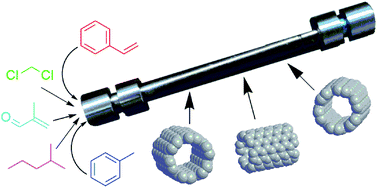Active and passive adsorption of 47 trace atmospheric volatile organic compounds onto carbon nanotubes
Abstract
Carbon nanotubes (CNTs) of varying sizes and CNTs functionalised with carboxylic acids were examined by thermal desorption gas chromatography mass spectrometry (TD-GCMS) to determine the degree of surface contamination of atmospheric volatile organic compounds (VOCs). The CNTs could be purged of physisorbed VOCs by heating to 380 °C under a stream of purified nitrogen gas. As soon as the cleaned CNTs were exposed to atmospheric air they spontaneously adsorbed trace VOCs. As well as passive adsorption of VOCs, active sampling was carried out by pumping atmospheric air through the CNTs and comparing the results with the standard multisorbent materials Carbopack X and Tenax that are used widely for VOC trapping and analysis. The CNTs were found to trap many VOCs at a comparable level to the standard sorbent materials. Therefore, to maintain the CNTs in a pristine condition, it is recommended that they are first heated under vacuum to remove residual physisorbed VOCs, and then stored under vacuum or in a purified inert gas atmosphere.



 Please wait while we load your content...
Please wait while we load your content...